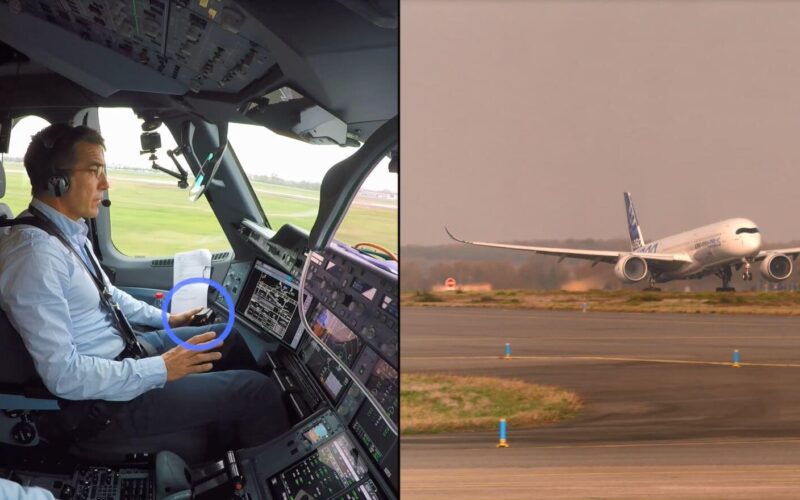Airbus performed the first fully automatic vision-based take-off using an Airbus Family test aircraft on January 16, 2020.
The automatic take-off was enabled by image recognition technology installed directly on the aircraft, instead of relying on an Instrument Landing System (ILS). A crew of five people, composed of two pilots, two flight test engineers and a test flight engineer, performed a total of 8 take-offs within four and a half hours at Toulouse-Blagnac Airport (TLS) in France.
Airbus Test Pilot Captain Yann Beaufils explained that the crew engaged the auto-pilot while they were completing alignment on the runway and waiting for clearance from air traffic control. The aircraft performed as it was expected to during the tests.
“We moved the throttle levers to the take-off setting and we monitored the aircraft,” said Beaufils, cited in a statement by the company. “It started to move and accelerate automatically maintaining the runway centre line, at the exact rotation speed as entered in the system. The nose of the aircraft began to lift up automatically to take the expected take-off pitch value and a few seconds later we were airborne.”
The automatic take-off is part of Airbus’ Autonomous Taxi, Take-Off & Landing (ATTOL) project, launched in 2018. By mid-2020, the company expects to test automatic vision-based taxi and landing sequences.
The company highlights that its goal is not to move ahead with autonomy as a target in itself. Autonomous technologies, alongside other innovations in areas such as materials, electrification and connectivity, are being explored to see their potential in improving air traffic management, future operations, aircraft safety, and addressing pilot shortages.
Previously, on December 18, 2019, Airbus introduced A350 XWB aircraft equipped with cockpit display touch screens, an industry’s first. China Eastern Airlines (CIAH) (CEA) was the first customer to receive the wide-body jet with the newest cockpit screen technology.

